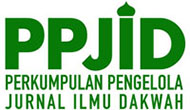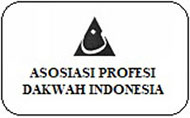NETRALITAS POLITIK KIAI DALAM PERSPEKTIF TEORI INTERAKSI SIMBOLIK
Abstract
The researcher examines the neutrality of the Kiai in the political year due to the existence of one of the candidates for the vice president who participated in the 2019 election is a great Ulama. The political stage not only presents the political maneuver of political figures and parties, but also the role of the Kiai who also took part in the democratic party. One of the kiai who has neutrality in politics is K.H. Sholeh Bahruddin, better known by the name of Kiai Sholeh. The purpose of this study is to analyze the neutrality of the kiai’s politics in the perspective of symbolic interaction theory. The methodology used in this research is descriptive qualitative. This research uses Symbolic Interactionism theory for its analysis. The result of the analysis shows that the neutrality of the Kiai is a solution to create peaceful election. Kiai Sholeh made several efforts to realize a peaceful election by: Firstly, Kiai Sholeh committed to uphold the integrity and sovereignty of the Republic of Indonesia based on Pancasila; Secondly, Kiai Sholeh supported the democratic system and the process of democratization as a political mechanism of the state; and finally, prioritizing peace, tolerance, and togetherness amid differences in political choices.
Keywords
Full Text:
PDFReferences
Haryanto, S. (2012). Spektrum Teori Sosial. Jogjakarta: Ar-Ruzz Media.
Karsona, A. (2016). Menyoal Makna Netralitas Pegawai Negeri Sipil dalam Undang-Undang Nomor 5 Tahun 2014 Tentang Aparatur Sipil Negara. Jurnal Media Hukum. 23 (1): 87-94.
Kriyantono, R. (2010). Teknik Praktis Riset Komunikasi. Jakarta: Kencana.
Littlejohn, S & Foss, K. (2012). Teori Komunikasi: Theories of Human Communication. Jakarta: Salemba Humanika.
Luthfie, M. (2017). Interaksi Simbolik Organisasi Masyarakat dalam Pembangunan Desa. Jurnal Kajian Ilmu Komunikasi. 47 (1): 19-33.
Moleong, L. (2014). Metodologi Penelitian Kualitatif. Bandung: PT Remaja Rosdakarya.
Morissan. (2013). Teori Komunikasi: Individu hingga Massa. Edisi Pertama. Jakarta: Kencana.
Mulyana, D. (2013). Metodologi Penelitian Kualitatif. Bandung: PT Remaja Rosdakarya.
Neuman, L. (2013). Metodologi Penelitian Sosial: Pendekatan Kualitatif dan Kuantitatif Edisi 7. Terjemah oleh Edina T. Sofia. Jakarta: PT Indeks.
Pondok Pesantren Ngalah, (2011). Ensiklopedi Jawabul Masail Bermadzab Empat: Manjawab Masalah Lokal, Nasional dan Internasional. Pasuruan: Yudharta Advertaising Design.
Rahayu, N. (2010). “Teori Interaksi Simbolik dalam Kajian Komunikasi” Widyatama. 19 (1): 1-19.
Sugiyono. (2012). Metode Penelitian Kuantitatif, Kualitatif, dan R&D. Bandung: Alfabeta.
Sobur, A. (2014). Filsafat Komunikasi: Tradisi dan Metode Fenomenologi. Bandung: PT Remaja Rosda Karya.
Soebahar, A. H. (2013). Modernisasi Pesantren: Transformasi Kepemimpinan Kiai dan Sistem Pendidikan. Yogyakarta: Lkis Pelangi Aksara.
Yuwita, N. (2017). Pluralisme Agama dalam Pemikiran Pesantren dengan Pendekatan Teori Interaksionisme Simbolik. Jurnal Heritage. 5 (2): 1-9.
West, R & Turner, L. (2014). Pengantar Teori Komunikasi: Analisis dan Aplikasi, Terjemah oleh Brian Marswendy. Jakarta: Salemba Humanika.
Instagram: @ngalah.tv, @santringalah1985, @ngalahdotnet, @ngalahpresent.
DOI: http://dx.doi.org/10.24014/jdr.v30i2.8047
Refbacks
- There are currently no refbacks.

This work is licensed under a Creative Commons Attribution-ShareAlike 4.0 International License.
Editorial Office:
2nd Floor, Building of Faculty of Da'wah and Communication, Universitas Islam Negeri Sultan Syarif Kasim Riau. Jl. HR Soebrantas Km 15, Simpangbaru, Tampan, Pekanbaru
Email : jurnalrisalah@uin-suska.ac.id

This work is licensed under a Creative Commons Attribution-ShareAlike 4.0 International License.














